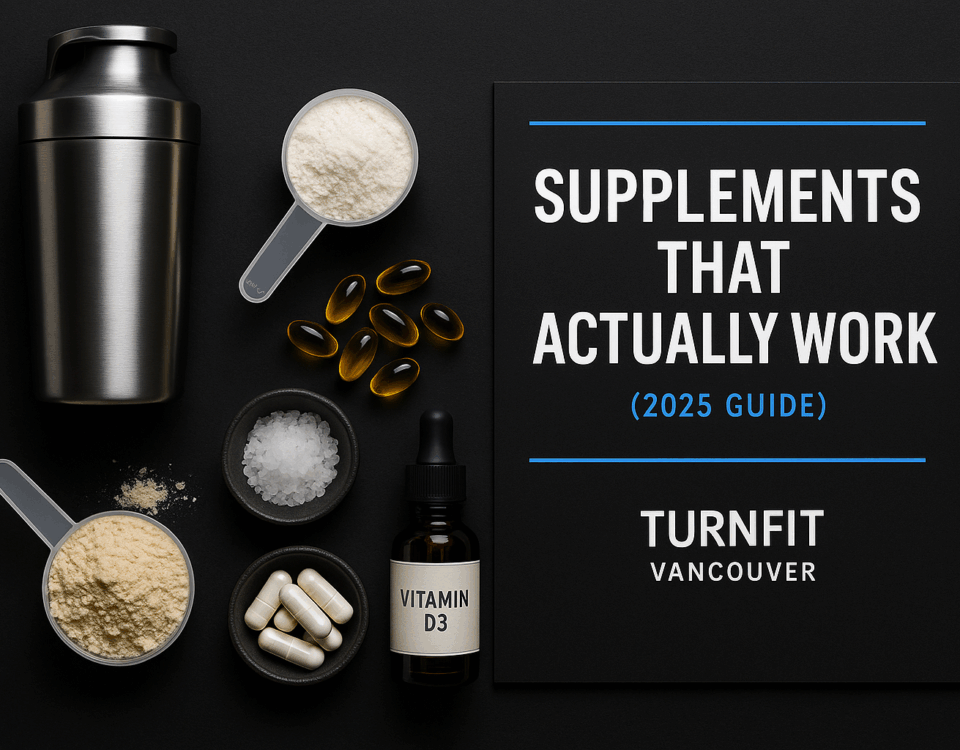Working from home or spending long hours in an office can wreak havoc on your body. If you spend your days hunched over a laptop or constantly scrolling your phone, you’ve probably felt the tell‑tale signs: a stiff neck, achy lower back, tight hips and constant headaches. In Vancouver alone, more than one third of residents sit for over seven hours a day and 70 % of adults develop muscular imbalances from device use. Over time this “tech‑neck” posture doesn’t just hurt – it saps your energy, slows your metabolism and leaves you feeling older than you are.
The good news? You can start reversing the damage in just a few minutes each day – even while you’re still at your desk.
What is tech‑neck and why it matters
When your head juts forward and your shoulders round, the muscles in your upper back, neck and core weaken, while the muscles in your chest and hips tighten. This misalignment forces your body to work harder to hold you upright and can contribute to chronic pain, tension headaches and even slowed calorie burn. Ignoring it can lead to more serious issues that take months to fix – and in some cases result in expensive surgery. In BC the average wait time for orthopaedic surgery is 28 weeks, so prevention is a lot easier than cure.
The 5‑minute desk‑routine
Try this simple routine once or twice a day to relieve stiffness and start correcting your posture. Set a timer for five minutes and move through each exercise slowly. Focus on your breathing and avoid forcing any positions – you’re aiming to feel gentle stretches, not pain.
- Cervical retractions – Sit tall with your feet flat on the floor. Gently tuck your chin and glide your head straight back, as if you’re giving yourself a double chin. Hold for 5 seconds and repeat 10 times. This strengthens the deep neck flexors and reverses forward head posture.
- Thoracic extensions – Place your hands behind your head and gently arch backwards over the top of your chair or a foam roller. Pause for 2–3 seconds, then return to neutral. Repeat 10 times to open the chest and mobilize the upper back.
- Open‑books – Sit or stand with your hands together in front of you at chest level. Keeping your hips facing forward, rotate one arm out to the side and follow it with your eyes, as if opening a book. Pause, then return and switch sides. Repeat 8–10 times per side.
- Hip flexor stretch – Stand up and take a long step back with your right foot. Keeping both hips square, gently bend your front knee until you feel a stretch at the front of your right hip. Hold for 20 seconds, breathing deeply, then switch legs.
- Core engagement drill – Back in your chair, sit tall and imagine you’re tightening a corset around your midsection. Gently draw your belly button toward your spine without holding your breath or collapsing your ribcage. Hold this gentle contraction for 10 seconds, then relax. Repeat 5 times.
That’s it – five movements, five minutes. Done consistently, these simple exercises will improve your posture, reduce stiffness and help your body burn more calories during workouts by allowing the right muscles to fire.
Small habits, big results
Real change doesn’t come from chasing perfection; it comes from stacking small wins day after day. Adding a five‑minute mobility break into your workday might feel too simple to make a difference, but our clients see noticeable improvements in their posture and energy in as little as 6–12 weeks. Many even avoid surgery because they address their movement patterns early.
If you’re ready to go deeper – or if you’re dealing with nagging pain that just won’t go away – we’re here to help. Book a free 5‑minute call with a TurnFit coach to get a personalized posture assessment and learn how our rehab‑to‑strength method can help you feel your best. No pressure and no judgement – just real answers.
FAQ:
- What causes tech neck? Poor ergonomics, prolonged smartphone use and slouched sitting compress cervical disks and strain upper‑back muscles.
- How often should I do these exercises? Daily, ideally during work breaks.
- Do I need equipment? No—just a chair and a light exercise band.
- When should I seek professional help? If you have persistent pain, numbness or headaches, consult a qualified therapist.
Sources:





